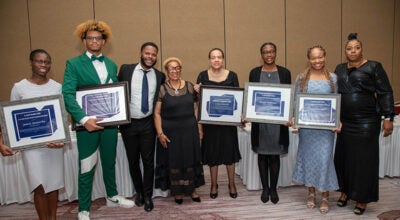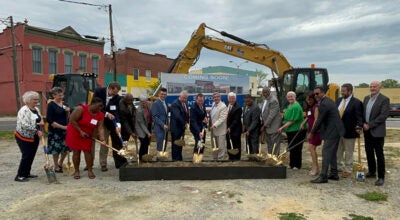City gets update on Historic District guidelines
Published 9:11 pm Wednesday, September 9, 2020
|
Getting your Trinity Audio player ready...
|
The revision of the city’s Historic District guidelines was not quite what some members of City Council expected.
Paige Pollard, a consultant with the Commonwealth Preservation Group, updated Council on the revision process during its Aug. 19 work session, saying they have worked through three drafts of the guidelines and have had input from city staff. It also held follow-up sessions with arts-affiliated groups since there were some issues of concern to them that would be new to the guidelines.
Pollard said CPG was told early in the process that the Historic District update would be the first step in the Downtown Master Plan update. She noted downtown’s uniqueness as a commercial destination. It gives an opportunity for a different commercial environment — a more pedestrian- and small-business-friendly experience “that doesn’t cannibalize the existing shopping centers all throughout the city.”
She said downtown is an area that can attract local, creative businesses, smaller in scale and with fewer employees. Larger developments in other parts of the city would not be as accessible or affordable for small businesses, she said.
“The guidelines can really help to set expectations and allow property owners whose everyday job might not be building restoration to really see a vision for what they can do with their buildings, and,” Pollard said, “as stewards of historic properties, also teach them about how they can most economically and effectively maintain those properties.”
Historic preservation is a link that connects much of the city’s Downtown Master Plan.
However, council members, including Mike Duman, Donald Goldberg and Tim Johnson, expressed concern about what they heard.
“Honestly, it’s not exactly what I thought we were going to get presented,” Duman said. “We got a lot of generalities. I’m a little concerned that you alluded to the fact that, possibly, enforcement activities vary within different parts of the city, and we’re not enforcing some of the ordinances that we have on the books now concerning downtown.”
Duman said the standards “feel like they’re kind of all over the place rather than get to the specifics of, specifically, what are we going to do as far as signage, we talked about materials. These were the key concerns of a lot of individuals that have to go there.”
Responding to Duman, Pollard said that initially, CPG was going to do two drafts of the guidelines and the updates, and has done three so far. She said it would have felt “out of step” not to talk to council first before talking to stakeholders in light of the importance she said council had placed on new standards.
“In terms of specifically addressing each of those elements that were key priorities, I’m happy to talk about how exactly we have addressed each one,” Pollard said. “It was very difficult to put this presentation together because you all aren’t actually going to be implementing the guidelines themselves, and so I didn’t want this to come across as a technical presentation about how you use the guidelines. That seemed like not the best use of your time since you aren’t going to be using them every day.”
However, she said she understood that council wanted to understand how CBG landed in terms of managing the changes in the Historic District.
Pollard said she understands that replacement materials were important to the council, explaining that if a material is in bad shape, that it could be replaced. And, is the new material durable, sustainable, has the same general characteristics of the historic material? She said it is best to come up with a process to approve a new material, not outline specific ones to be allowed.
“The reason we don’t come up with a list for alternative materials is because I deal in this business every day,” Pollard said. “And every day, I see a new product. And if we come up with a finite list of replacement materials that are appropriate, it will be out of date tomorrow.”
For a sign, if a building is painted, it can have a painted sign, a surface-mounted sign, a blade sign, a lighted sign as long as it’s not a box sign. It also recommended allowing neon signage “if it’s appropriate on the building,” Pollard said.
Though no specific timetable was set, the next steps for the guidelines include a public outreach meeting and finalize the design standards before taking them to the Planning Commission and the City Council for approval. CPG would then hold an in-depth training session with the city’s Historic Landmarks Commission on how the standards would be applied.
Duman said the less subjective the standards are, the better they will be, adding that everyone who desires a say should have it so that when the standards are finalized, they can last for a while.
Pollard said it has been unclear what property owners had to show to prove that their windows, or another element of their building, were in bad shape.
“We had no way in looking at files to know what your standard is,” Pollard said. “Or do you just not care, which becomes a bit of an issue with the CLG (Certified Local Government) designation.”
She said the guidelines will let the city determine what it finds acceptable. Mayor Linda T. Johnson said the council needs time to digest CPG’s report.
“Whichever version of the standards is adopted,” Pollard said, “just know that (the Historic Landmarks Commission’s) job is to implement the standards, and your job is to determine when those standards aren’t serving the community.”






